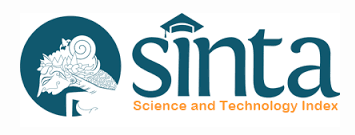Human Capital dan Upah Dosen Perguruan Tinggi Negeri pada Pekerjaan Sampingan di Kota Makassar
Abstract
This study aims to determine the effect of human capital (education and work experience) on wages working on side jobs, either directly or the work productivity of lecturer at State University in Makassar. Sampel of 220 respondents was selected purvosive by population of lecturer PTN in the Makassar City minimally educated S2 degree and IIIC. By using SEM analysis (Structural Equation Model), the results showed that: (1) work experience and formal education PNS was given positive and significant impact on work productivity of lecturer. The implication lecturer competence is determined by factors of education and work experience. (2) However, only formal education have a significant effect on the wage side working, while the experience of working and labor productivity appears no effect. Gives an indication that there is no other way to fix the additional labor income lecturers, except by improving the competence through continuing education.
References
Addison, John T and Pedro Portugal, 1989. Job Displacement, Relative Wage Changes and Duration of Unemployment: Journal Labor Economics, Vol. 7: 281-302.
Bach, George Leland, etc., 1987. Economics : Analysis, Decision Making, and Policy. 11th Edition, Prentice-Hall, Inc., Englewood Cliffs, N.J., USA.
Barlevy, Gadi, 2001. Why Are the Wages of Job Changers So Procyclical: Journal Labor Economics, Vol. 19: 837-878.
Bauer, Thomas C., 1999. Educational Mismatch and Wages in Germany : Journal Institute for the Study of Labor, Germany.
Becker, Gary S.,1993. Human Capital: A Theoretical and Empirical Analysis, with Special Reference to Education, 3rd Ed, Universitas of Chicago, Chicago.
Beegle, Kathleen, 2003. The Labor Market Effects of Disability Discrimination Laws; The Journal of Human resources, Vol. 38: 806 -859.
Belzil, Chiristian, 2000. Job Creation and Job Destruction, Worker Reallocation, and Wages: Journal Labor Economics, Vol. 18: 183-203.
Blaug, M., 1973. Education and the Employment Problem in Development Countries, Jenewa : ILO.
Bloeman, Hans G and Elena G. F. Stancanelli, 2001. Idividual Wealth, Reservation Wages, and Transitions into Employment. Journal Labor Economics, Vol. 19: 401-439.
Bound, John and Harry J. Holzer, 2000. Demand Shifts, Population Adjustments, and Labor Market Outcomes During the 1980s: Journal Labor Economics, Vol. 19: 20-34.
Costa, Dora L, 2000. The Wage and the Length of the Work Day: From the 1890s to 1991; Journal Labor Economics, Vol. 19: 156-181.
Davis, Keith, 1985. Human Behavior at Work : Organizational Behavior, Tata, McGraw-Hill Publishing Company, New Delhi.
Dickens, Richard and Alan Manning, 1999. The Effects of Minimum Wages on Employment: Theory and Evidence from Britain; Journal Labor Economics, Vol. 17: 1-22.
Ehrenberg, Ronald G. and Rober S. Smith. 1988. Modern Labor Economics Theory and Public Policy, 3rd Edition, USA.
Fehr, Erst and Lorenz Gotte, 2004. Do Worker Work More When Wage Are Hight: Journal Institute for The Study of Labour, Germany
Filer, R.K., 1985. Male-Female Wage Difference : The Importance of Compensation Diffencials. Idustrial and Labor Relations Review, Vol. 3.
Freeman, Ricard B, 1972. Labor Economics. New Jersey, Prentice-Hill.
Galindo, Fernando, 2002. Endogenous Wage and Capital Dispersion, On-The-Job Search and The Matching Technology : : Journal Institute for The Study of Labor, Germany.
Hellerstein, Judith K and David Neumark, 1999. Wages, Productivity, and Worker Charasteristic: Evidence from Plant-Level Production Functions and Wage Equatuion; Journal Labor Economics, Vol. 17: 409-446.
Lettau, Michael K., 2003. New Estimates for Wage Rate Inequality; The Journal of Human resources, Vol. 38: 792-805.
Mangkunegara, Anwar P., 2004. Manajemen Sumber Daya Manusia Perusahaan, PT. Remaja Rosdakarya, Bandung.
McConnell, Campbell R. and Stanley L. Brue. 1999. Contemporary Labor Economics, First Edition, Mc Graw-Hill International Editions, Singapore.
Mehta, Shaailendra Raj, 2000. Quality of Education, Productivity Changes, and Income Distribution: Journal Labor Economics, Vol. 18: 252-281.
Meng, X., 1988. Male-Female Wage Determination and Gender Wage Discrimination in China’s Rural Industrial Sector. Journal Labor Economics, Vol. 5(1): 67-89.
Newell, A., and Rally B., 1996. The Gender Wage Gap in Rusia : Some Emperical Evidence. Journal Labor Economics, Vol. 3 (3): 337-356.
Samuelson, Paul A. and William D. Nordhaus, 1992. Economics, 14th Edition, McGraw-Hill, Singapore.
Sudekum, Jens, 2004. Wages and Employment Growth: Disaggregated Evidence for West Germany; Journal Institute for the Study of Labor, Germany.
Terrell, Katherine, 2004. Legal Minimum Wage and the Wages of Formal and Informal Sector Workes in Costa Rica: Journal Institute of the Study of Labor, Germany.
Todaro, Michael, P. 2000. Economic Development in The Third World, Published by Longman Group Limited, London, UK.
Walsh, Frank, 1999. A Multisector Model of Efficiency Wages: Journal Labor Economics, Vol. 17 (351-376), The University of Chicago Press, Chicago.
Wheeler, Christopher H, 2001. Search, Sorting and Urban Agglomeraton: Journal Labor Economics, Vol. 19: 879-948.
Wolter, Stefan, C. and Stefan Denzler, 2003. Wage Elasticity of Teacher Supply in Switzerland : Journal Institute for The Study of Labour, Germany.
Yuen, Terence, 2003. The Effect of Minimum Wages on Youth Employment in Canada: A Panel Study; The Journal of Human resources, Vol. 38: 647-672.










